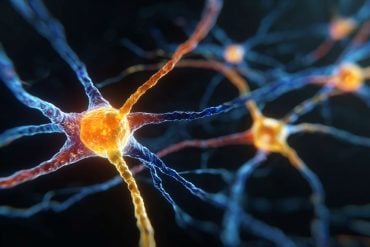Summary: A large Swedish study of 1.8 million pregnancies found that mental ill health around pregnancy has risen in recent years, with risks spiking after childbirth. While depression and psychosis rates drop during pregnancy, postpartum depression is 20% more likely within weeks 5–15, and psychosis risk is up to seven times higher in the first 20 weeks.
Screening guidelines introduced in 2020 have led to earlier detection of depression, though not more overall diagnoses. Researchers stress the importance of monitoring and support to protect maternal mental health and prevent severe outcomes like suicide.
Key Facts
- Depression Spike: Risk is 20% higher during weeks 5–15 postpartum.
- Psychosis Risk: Up to sevenfold increase in the first 20 weeks after childbirth.
- Screening Impact: New guidelines help detect depression earlier, reducing untreated suffering.
Source: Karolinska Institute
Mental ill health in connection with pregnancy and childbirth can have long-term consequences for women’s health. During this period, major biological and psychosocial changes occur that can increase vulnerability to depression, anxiety, and other psychiatric conditions.
Despite previous research, knowledge has been limited, especially regarding how different psychiatric diagnoses develop before, during, and after pregnancy.
In a new study, researchers have used data from Swedish registers covering all women who gave birth in Sweden between 2003 and 2019 – a total of nearly 1.8 million pregnancies.
The study, published in the journal Molecular Psychiatry, shows that mental ill health has increased over time during this period, especially before pregnancy. During pregnancy itself, the number of new diagnoses decreases, but after childbirth, the risk increases again, especially for depression and psychosis.
“We can see that the risk of depression is about 20 percent higher during weeks 5 to 15 after childbirth, compared to the year before pregnancy. For psychosis, the risk is up to seven times higher during the first 20 weeks after childbirth,” says the study’s first author Emma Bränn, researcher, Institute of Environmental Medicine, Karolinska Institutet.
When national guidelines for screening pregnant women for depression were introduced in 2020, it opened up the possibility of detecting mental illness earlier. By comparing women who gave birth before and after 2020, the researchers saw that the peak of depression diagnoses occurred earlier after childbirth in women who gave birth after the guidelines were introduced.
“We don’t see that more people are being diagnosed, but screening could mean that women are identified earlier and don’t have to suffer as long before they can get the support and help they need,” says Emma Bränn.
The study also shows that the risk of other psychiatric diagnoses, such as anxiety, stress-related conditions, and substance abuse, is lower during pregnancy and after childbirth compared to before. The researchers believe that this may be due to biological changes, lifestyle changes, and increased contact with healthcare during pregnancy.
Another study from the same research group has investigated the risk of suicide in connection with pregnancy and childbirth. In the study, published in Nature Human Behaviour, researchers found that mothers were less likely to attempt suicide during and after pregnancy compared to fathers.
This is the opposite of what researchers usually observe in the general population, where women tend to have higher rates of suicide attempts than men. For fathers, the risk decreased in the first ten weeks after childbirth, only to increase again.
“Our results suggest that both mothers and fathers are less likely to attempt suicide immediately after having a child, especially mothers,” says first author Yihui Yang, PhD student at the Institute of Environmental Medicine, Karolinska Institutet. She continues:
“Although suicide attempts during and after pregnancy are rare, they can have devastating consequences and are often preventable. It is therefore important that healthcare providers conduct regular check-ups during and after pregnancy to identify parents who are struggling and offer support to prevent suicide.”
The study in Molecular Psychiatry was funded in part by the Uppsala Medical Faculty Foundation, while both studies were funded by Karolinska Institutet, Forte, and the Swedish Research Council. The researchers state that they have no conflicts of interest.
About this mental health research news
Author: Press Office
Source: Karolinska Institute
Contact: Press Office – Karolinska Institute
Image: The image is credited to Neuroscience News
Original Research: Open access.
“Maternal psychiatric disorders before, during, and after pregnancy: a national cohort study in Sweden Running title: Maternal perinatal psychiatric disorders” by Emma Bränn et al. Molecular Psychology
Open access.
“Sex difference in parental risk of suicide attempt during and after pregnancy in Sweden” by Emma Bränn et al. Nature Human Behavior
Abstract
Maternal psychiatric disorders before, during, and after pregnancy: a national cohort study in Sweden Running title: Maternal perinatal psychiatric disorders
Maternal mental health is a critical public health issue, yet the evidence on rates of incident psychiatric disorders before, during, and after pregnancy is limited. This study aimed to describe the calendar time trends and characterize and compare the risk of maternal psychiatric disorders before, during, and after pregnancy.
Leveraging the national and regional registers in Sweden, we conducted a cohort study of all women who gave birth 2003–2019 in Sweden (1,799,010 pregnancies from 1,052,977 women).
We identified any incident diagnosis of psychiatric disorders recorded during three periods: the preconceptional year, pregnancy, and the postpartum year. We calculated age and calendar year standardized incidence rate (SIR) of psychiatric disorders annually, and by week across three periods. We further estimated the incidence rate ratio (IRR) using the rate during corresponding preconceptional weeks as the reference.
The SIR of maternal psychiatric disorder overall increased from 2003–2019, especially for preconceptional disorders. During the preconceptional year the weekly SIR of any psychiatric disorder was stable at around 25 per 1000 person-years.
The SIR gradually decreased during pregnancy to a minimum of 4 per 1000 person-years and bounced back to the preconceptional levels during the postpartum year. This trend was similar in all subtypes of psychiatric disorders, except for depression and psychosis for which an increase was noted at 5–15 and 0–20 postpartum weeks, respectively.
An increased incidence rate of maternal psychiatric disorder diagnosed before, during, and after pregnancy was found over time.
Our findings suggest an increased risk of depression and psychosis shortly after delivery, although a lowered risk of other psychiatric disorders during and after pregnancy, compared to before pregnancy.
Abstract
Sex difference in parental risk of suicide attempt during and after pregnancy in Sweden
Whether the risks of maternal and paternal suicide attempt during and after pregnancy differ remains unclear.
Here, in this nationwide register-based study in Sweden (2,196,276 pregnancies), we defined the year before conception, pregnancy and the year after birth and estimated week-specific incidence rate ratios (IRRs).
We identified 7,469 (1.39 per 1,000 person-years) suicide attempts among mothers and 8,338 (1.62 per 1,000 person-years) among fathers.
Compared with the corresponding week in the preconception period, mothers had a lower risk of suicide attempt during and after pregnancy (with the lowest IRR of 0.14 (0.11–0.17) at first week postpartum); fathers’ risk of suicide attempt remained largely stable before childbirth, but a lower risk was observed during the first 10 postpartum weeks (IRRs ranging from 0.69 (0.58–0.81) to 0.91 (0.84–0.99)), followed by a higher risk in the later postpartum period (IRRs ranging from 1.10 (1.01–1.21) to 1.72 (1.33–2.24)).
Compared with fathers, mothers had a lower risk of suicide attempt during and after pregnancy (for example, IRR of 0.22 (0.18–0.28) at first week postpartum).
Compared with the general population, the sex difference of suicide attempt is reversed during and after pregnancy, suggesting pregnancy or childbirth may have a more pronounced association with suicide attempt among mothers than fathers.







